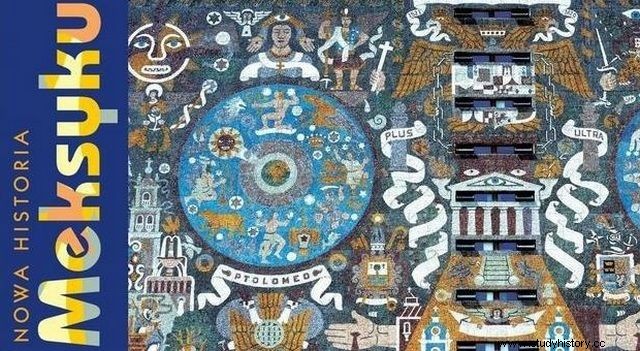When the Declaration of Independence was announced in Philadelphia in 1776, it did not seem that the United States would become the most powerful country on the American continent. One of the neighbors had a better chance of dominating the region. But in a hundred years everything has changed.
Mexico, because this is what we are talking about, still at the end of the eighteenth century was in a much more favorable situation than the United States. Why is English, and not Spanish, ultimately the most important language in the world? What went wrong?
1. The robbery policy of the Spaniards
When in 1620 102 English Puritans fleeing their homeland from religious persecution landed on the coast of America's east coast, they already had a written contract regulating the rules of the new community. They brought discipline, a passion for hard work, and praise for individualism and getting rich.
Restless, brave spirits were arriving to the new homeland, still dependent on London. However, since these first emigrants in their old homeland had burned their bridges behind them, they built the new world with themselves in mind, and not with England. This is how they laid the foundations for the future power of the United States.
Meanwhile, the Spaniards had one goal: they wanted to plunder as much as possible and as quickly as possible for the glory of the metropolis. Before the arrival of the English, they had already colonized practically all of modern Mexico. It took the insolence of Hernán Cortés to conquer a country of 1.5 million in 500 people ...
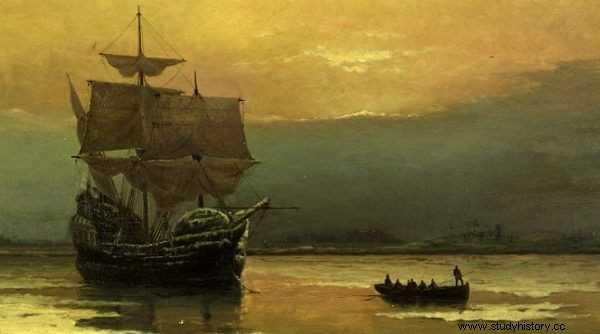
At the time when the crew of the Mayflower was landing on the shores of America, no one expected it to be the beginning of the history of a new power. Pictured is a painting by William Halsall (source:public domain).
They also occupied parts of what is now California, Arizona, and Texas, and Florida. And although they inhabited such huge areas, they were primarily interested in their robbery exploitation. Decades ago, they did not introduce any innovations in the ore mines, focusing on maximum extraction.
2. Independence? Reluctantly…
The independence of the United States was long awaited by the colonists, and the struggle for it helped build a modern state. Independence from the metropolis was first and foremost seen as a great deal to get out of London's economic exploitation. In addition, the need to mobilize all forces in the face of the conflict with England became a factor uniting the individual colonies. In turn, the need to develop the foundations of the new state made it possible to spread modern ideas of the Enlightenment.
At the same time, the Spanish colonists, despite the disintegration of the mother-monarchy in Europe, were not particularly interested in independence. When the uprising against Madrid finally broke out in 1810, the reasons for the rebellion were overwhelmingly reactionary. It was based on opposition to godless European Spaniards who conspired with the famous anti-clerical Napoleon and English Protestants.
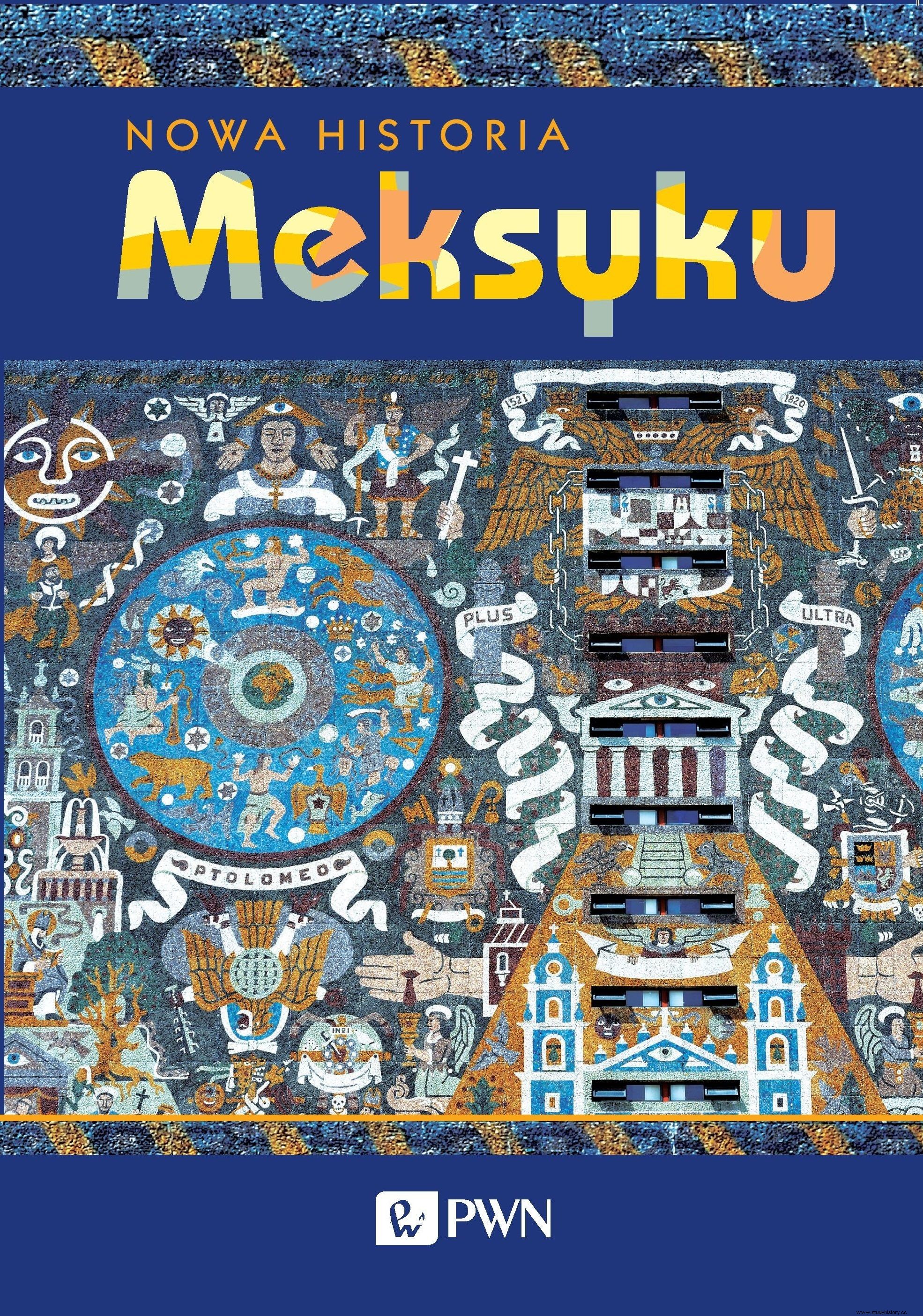
The article is based, among others, on the recently published "New History of Mexico (PWN Scientific Publishers 2016).
In other words:independence yes, but above all for… preserving the privileges of the Catholic Church! The treasures of the Church that owned half of Mexico's land are almost unbelievable they wanted to protect against the revolutionary changes coming from Europe.
Even this did not convince everyone:when Mexico finally gained independence in 1821, many provinces were still very reluctant to join the independence movement, jealously guarding their autonomy.
3. Lost race for the Wild West
It is worth remembering that the United States' Declaration of Independence was signed in 1776 by only 13 states hugging the east coast of North America, with a population of only 2 million. At the same time, the Viceroyalty of New Spain encompassed a stunning territory, the second largest in the world (after the Russian Empire). The Spaniards conquered all of Central America, three-quarters of the territory of the present United States, all of the Caribbean, and part of today's Venezuela. They had over 5 million subjects in total!
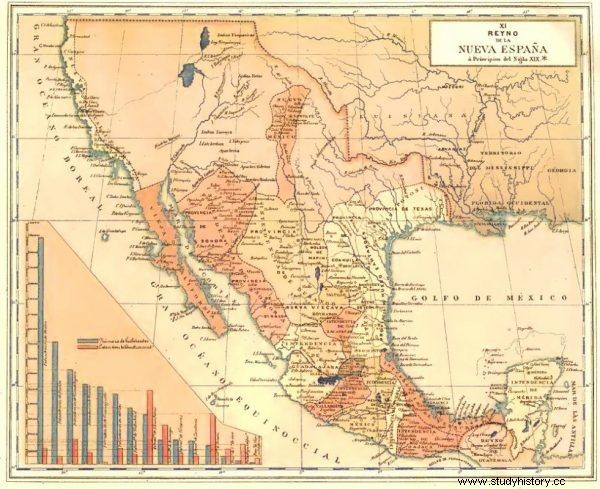
The Viceroyalty of New Spain encompassed much of the present-day United States, all of Central America, and a portion of Venezuela (source:public domain).
Louisiana was also under Madrid's rule. It was a huge territory, much larger than the current US state of that name. All areas around the Mississippi River were designated as such. Spanish settlers came to the lands taken over from the French in 1763 very slowly.
Quite quickly, the entire central part of the continent fell into French hands again. Not for long:soon Napoleon Bonaparte made the decision to sell Louisiana to the Americans ... for $ 15 million . The transaction was made in 1803. Interestingly, an English bank lent the American government the money for the largest ever real estate purchase!
This article has more than one page. Please select another one below to continue reading.Attention! You are not on the first page of the article. If you want to read from the beginning click here.
The United States thus opened the way for further expansion towards the Pacific Ocean. The government in Washington understood perfectly well that winning the race to colonize the endless territories in the interior of the continent is the most important task of a young state. Thousands of American settlers immediately set off to conquer the Wild West. The pendulum, indicating the greatest power on the continent, tilted significantly towards the United States ...
4. Selling Territory
The Louisiana purchase was not the only US investment in expanding its territory. Poles, especially those who like to point out mistakes made by Russians, most eagerly listen to the story sold to the Americans for $ 7.2 million from Alaska. But our eastern neighbors must have learned from the Mexicans of making disastrous deals with Americans.
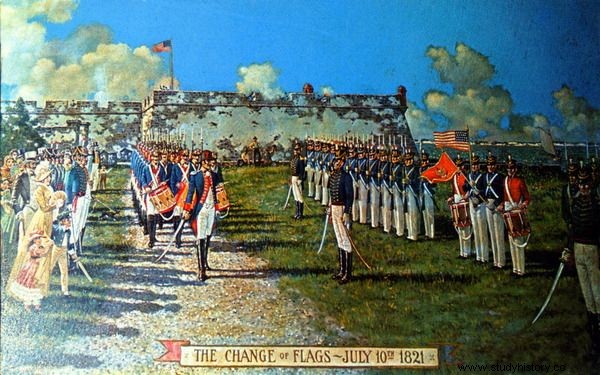
As early as 1819, the Americans bought Florida from the Spaniards. The illustration shows the moment of the official takeover of this territory in 1821 (source:public domain).
Even during the reign of the Spanish, in 1819, the United States bought Florida for 5 million dollars. Following the blow, in 1825 the Yankees had already offered independent Mexico to buy Texas. It was an area that was practically independent, dominated by American settlers. They looked with dislike at the anarchy prevailing in Spanish-speaking America. The Mexicans did not agree to the transaction, however.
The refusal by Mexico did not deter the Americans for long. In 1845, they again offered to buy Texas and California. Although they offered as much as $ 30 million, the Mexican government did not even accept the American delegation. So the US Congress decided on a forceful solution: enacted Texas as the 28th state! Mexico started a war with the United States in response. As the authors of "New Mexico's History" write:
Mexico's situation was dire (...). Torn internally, without resources and allies with an army deprived of almost everything, Mexico faced a professional army, modern weapons and long-range artillery, with thousands of well-trained, uniformed, paid and nourished volunteers.

The article is based, among others, on the recently published "New History of Mexico (PWN Scientific Publishers 2016).
Faced with such a power imbalance, the result was easy to predict. The losers had an offer they couldn't refuse:Mexico gave the United States a much larger territory of the future states of California, Texas, New Mexico, Arizona, Nevada, Utah, Wyoming and Colorado… for just $ 15 million. Five years later, due to the bankruptcy of the country, Mexicans sold southern Arizona for $ 10 million. This ultimately shaped the boundary that still exists today.
The effect of these eight-year financial and war struggles was tragic for Mexico. He lost half his territory to a stronger neighbor! The cards on the mainland have been dealt. As the author of "The New History of Mexico" writes: the old dreams of power faded away. Deep pessimism and the traumatic experience of defeat caused a widespread collapse.
5. Civil wars and missed opportunities
Mexico's situation did not improve in the following years. Hordes of savages poured into the country across the northern border (Indians), whom the growing neighbors could not, or rather did not want to hold back. In addition, the cholera epidemic practically stopped population growth for almost two decades.
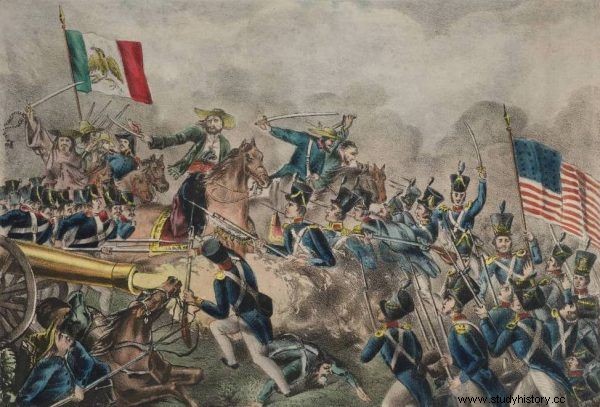
The Mexicans had virtually no chance against the well-trained and armed American army. Their troops literally lacked everything (source:public domain).
Internal tensions, both ethnic and political, grew in the country. The advocates of federalism clashed with the centralists, and the republicans - with the monarchists. This eventually led to the outbreak of a civil war. During it, the supporters of the monarchy offered the crown to Franz Józef's brother, Maksymilian Habsburg, who, however, at first refused. He realized himself in life ... as a botanist in Brazil, where he discovered unknown species of plants.
Meanwhile, in the United States, the Civil War broke out, which may have been Mexico's last chance to weaken a powerful neighbor and fight for supremacy on the continent . For example, it was possible to reclaim Texas, which was seriously considering seceding from the US and returning to its neighbor.
Unfortunately, the European powers came up with a similar idea, which took advantage of the turmoil in the region to return to the American continent. As we read in "The New History of Mexico":
The Emperor of the French felt called to save Hispanic nations from Anglo-American expansionism, and the opportunity arose just now, with the United States plunging into a great civil war.
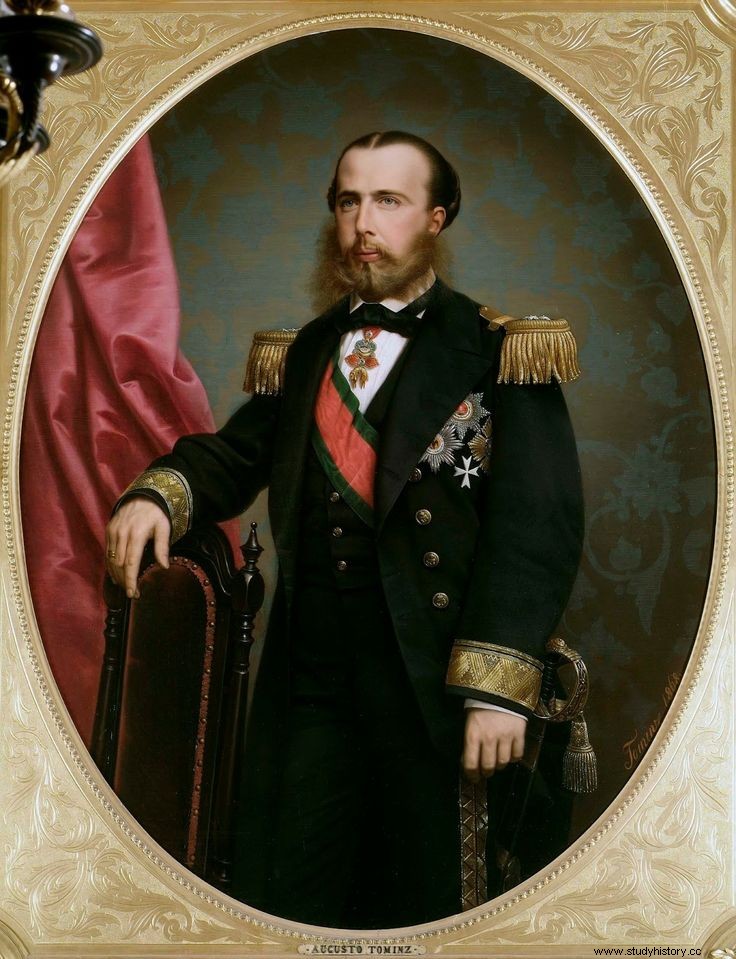
Emperor Maximilian I in the painting by Avgust Tominc (source:public domain).
Under the pretext of enforcing debts that the Mexican government had ceased to pay, the French, accompanied by Polish volunteers, entered Mexico. They captured the capital and finally installed on the throne the previously reluctant Maximilian Habsburg.
The empire did not last long:it collapsed after four years of brutal and exhausting civil war. Maximilian was shot. However, Mexico never got another opportunity to take advantage of the period of internal weakness in the United States. The last chance was wasted.
Summary of the tragic Mexican century
Mexican political commentators wondered how the United States could so rapidly dominate its once-stronger neighbor. They concluded that Mexico does not, and cannot, be what is called a national spirit because there is no nation.

The article is based, among others, on the recently published "New History of Mexico (PWN Scientific Publishers 2016).
The facts speak for themselves:in just a hundred years, the territorial proportions between Mexico and the United States have changed from 10:1 to 1:4. Mexico shrank fivefold over this period, from ten million square kilometers to two, while the United States expanded its territory, largely at the expense of its neighbor, eightfold! In the second half of the nineteenth century, they no longer covered one million, but eight million square kilometers ...
Mexico did not lose its independence, as did Poland, which at about the same time fell under the blows of Russia, Prussia and Austria. On his own breast, however, he bred a new power that eventually overshadowed him. It was the United States that became the most powerful country on the American continent. And if it weren't for this horrible century, maybe the Mexican would be the first man on the moon?
Buy the book with a discount on the Publisher's website:
